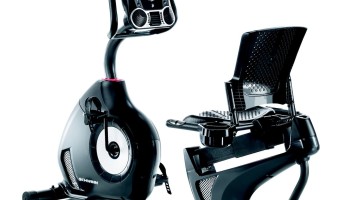There are three parts to your metabolism: Resting Metabolic Rate (RMR); Thermal Effect of Food (TEF); Physical Activity Energy Expenditure (PAEE). Your RMR – the rate at which your body burns calories when at rest - is generally defined by your age, gender, and genetics. Of course, there really isn’t much if anything you can do to change these three.
However, the other two elements are ones that you can affect to a limited degree. TEF is the rate at which your metabolism burns calories after you eat something. Once that food has been processed by your metabolism, it reverts back to the RMR level. One way to keep your metabolism functioning at the higher TEF level is to keep food in your stomach.
Six smaller meals, or a breakfast, lunch and dinner along with a snack in the morning and afternoon, spread throughout the day will keep your metabolism functioning at the TEF level longer. Of course the trick is to keep the number of calories ingested at a level you need to either maintain or lose weight.
The last part of metabolism – PAEE - is where you can make the most difference. The level at which this process operates is almost entirely dependent on exercise; in specific:
1) Type
There are generally two types of exercise – cardio and strength training. Examples of cardio include walking, running, bike riding and tennis; anything that you do at a moderate level over an extended amount of time.
On-the-other hand, strength training is generally done at a more intense level, but for a shorter amount of time. The difference between the two is the kind of calories each burn. With cardio, the calories come from stored fat – not the type of fat that need to be replaced. With strength training, your metabolism burns glucose stored within your muscle mass and it does need to be replaced once depleted.
The biggest difference with strength training is your metabolism stays up long after the exercising has stopped until glucose is back at its proper levels. The longer your metabolism stays at a higher functioning level, the more calories burned.
2) Frequency
This relates to how many times per week you exercise. Each time you exercise, your metabolism kicks up to the higher PAEE rate of burn. It makes sense that the more times you kick it in high gear each week, the more calories you’ll burn that week. Experts generally agree six days per week is the most anyone should exercise. Your body needs that seventh day off to rest and repair itself.
3) Intensity
How hard you work out also affects the number of calories you burn. Kettlebell, medicine ball toss and weight lifting are all higher intensity-type exercises. Because you cannot do high intensity exercises for a long period of time, many fitness professionals recommend interval training.
With this type of training, you perform at a high intensity for a short period of time, then drop back to a lower intensity cardio exercise, before kicking it back up again. This up and down intensity gives you the highest calorie burn over a given time.
4) Duration
The amount of time you exercise at any one given time is duration. Many people end up not exercising because they think they have to do it in one chunk of time. Actually the opposite is true; three 10-minute workouts per day, actually burn more calories than one 30-minute workout. Why? Because you are getting up into the PAEE more times per day and getting three post-exercise burns instead of one.








